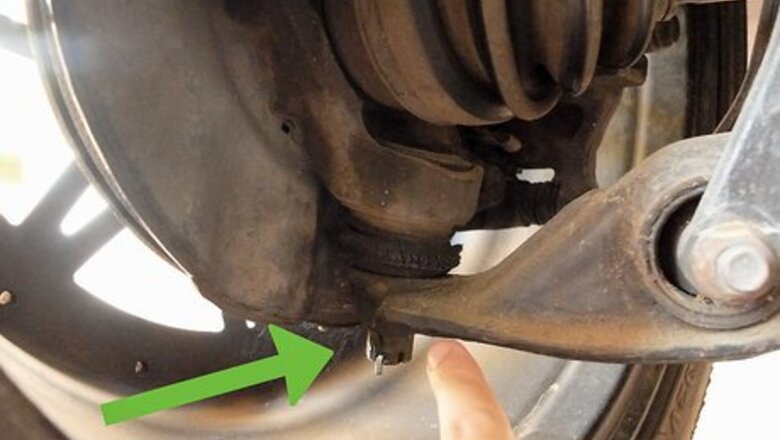
views
Checking Vehicles with Short Long Arm Suspension
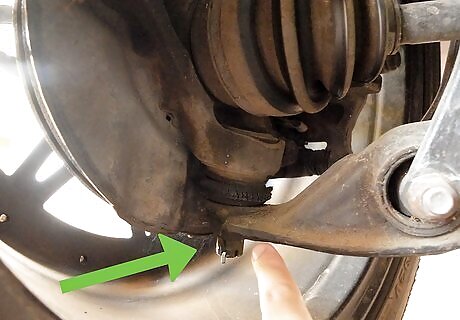
Look for a wear indicator. While the vehicle is still on the ground, look underneath the car, on the bottom of the steering knuckle attached to the wheel. The most common indicator is a grease fitting that doubles as a wear indicator. That fitting, or boss, will stick out of the bottom of the joint’s housing by about half an inch (1.25 centimeters). As it wears the boss will recede into the housing. As long as the boss protrudes out, the joint should be fine. Once the boss is flush with the housing or has receded even further, you’ll need to replace the ball joint. This applies to older cars. Most new cars do not have wear indicators, or a grease fitting. If you can’t find a wear indicator, or if the indicator doesn’t give you a clear enough sign, raise up the car to inspect the joint more thoroughly.
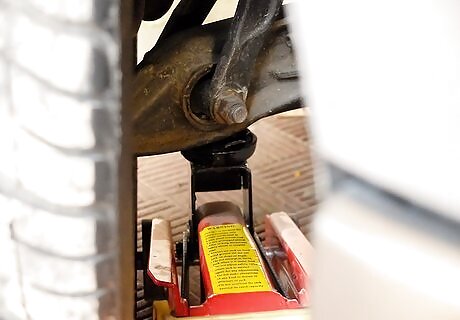
Raise the front end of the car. To check a loaded lower ball joint, the manufacturer will recommend that you place a jack under the lower control arm of the front wheel, as close to the ball joint as you can, then raise the vehicle until the wheel leaves the ground. If you don't do this, tension will still be on the ball joint when you jack up the car, making it difficult to move and look for play on the joint. Make sure there is no compression in the suspension when you check the ball joint. If you have control arms of unequal lengths, make sure the upper bump stop doesn’t touch the control arm.
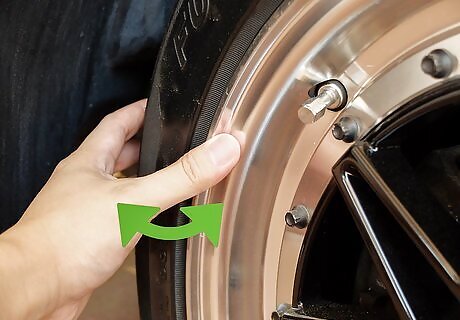
Rock the wheels and check for play. Make sure your car is jacked securely. The vehicle must be on frame stands when jacked up and you are working on the vehicle. Move dial indicator to the side of the nut or to the side of the spindle and move the wheel in and out to check radial wear. For vertical play, place the dial indicator against the steering knuckle stud nut or the ball joint housing, depending on the manufacturer. Grab the wheel at the top and bottom (12 and 6 o’clock) to lift up and pull down. Move the dial gauge to the side of the nut and grab the tire at the bottom and move it in and out to check radial play of the joint. Read the dial indicator and check against the manufacturer’s specifications. If the movement is beyond specifications, replace the ball joint. Experienced mechanics will also just check play by the feel, listening closely for any clicking or easy motion that suggests the ball joint is worn out. Alternatively, you could have a helper look closely at the joint itself to see if it appears loose as you move it.
Checking Vehicles with MacPherson Strut Suspension
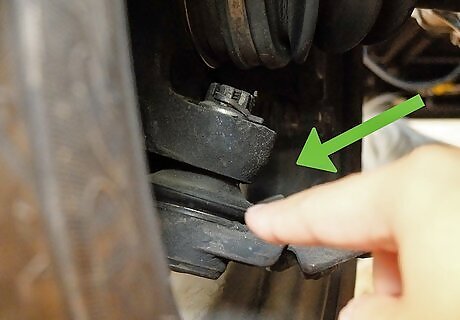
Look for the grease fitting. If your front suspension uses MacPherson struts, look for a wear indicator, which is usually a grease fitting. Grasp the fitting and try to wiggle it. If the fitting moves around inside the housing, you’ll need to replace the ball joint.

Jack up the car on the front cross-member. Many front wheel drive cars with strut suspensions should not be jacked up using the lower control arm, so it's a good idea to consult your owner's manual before attempting to inspect the joint. In general, you're going to want to jack the car up in the directed place as you normally would, on the crossing member of the frame. Let the MacPherson struts extend as far out as you can before you try to check the wheels for play.
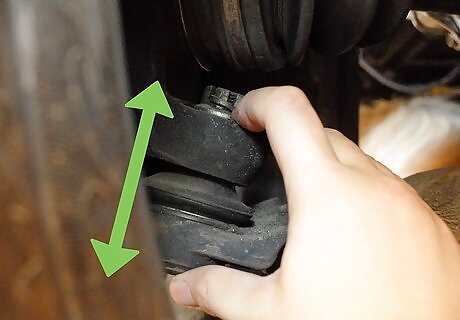
Use your hand to check the up-down play on the ball joint. Rock the lower part of the wheel around to see if there is any play in the joint. If there is any play in the joint, it must be replaced.
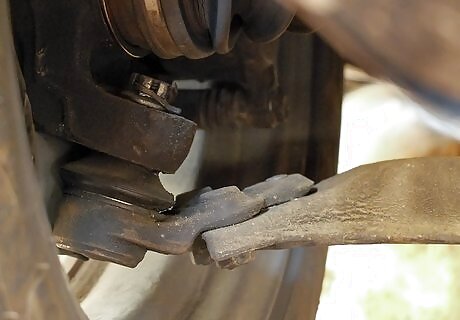
Listen. The ball joint assembly in a vehicle with strut suspension should be silent. Any clicking sound when you move it up indicates it's worn out and not working smoothly as it should. If you notice significant play, you need to change the ball joint. Alternatively, have someone look at the ball joint while you attempt to move it. It'll shudder slightly and look insecure if it needs to be replaced.













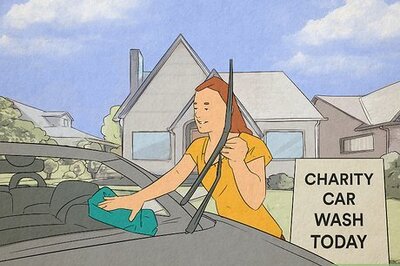




Comments
0 comment